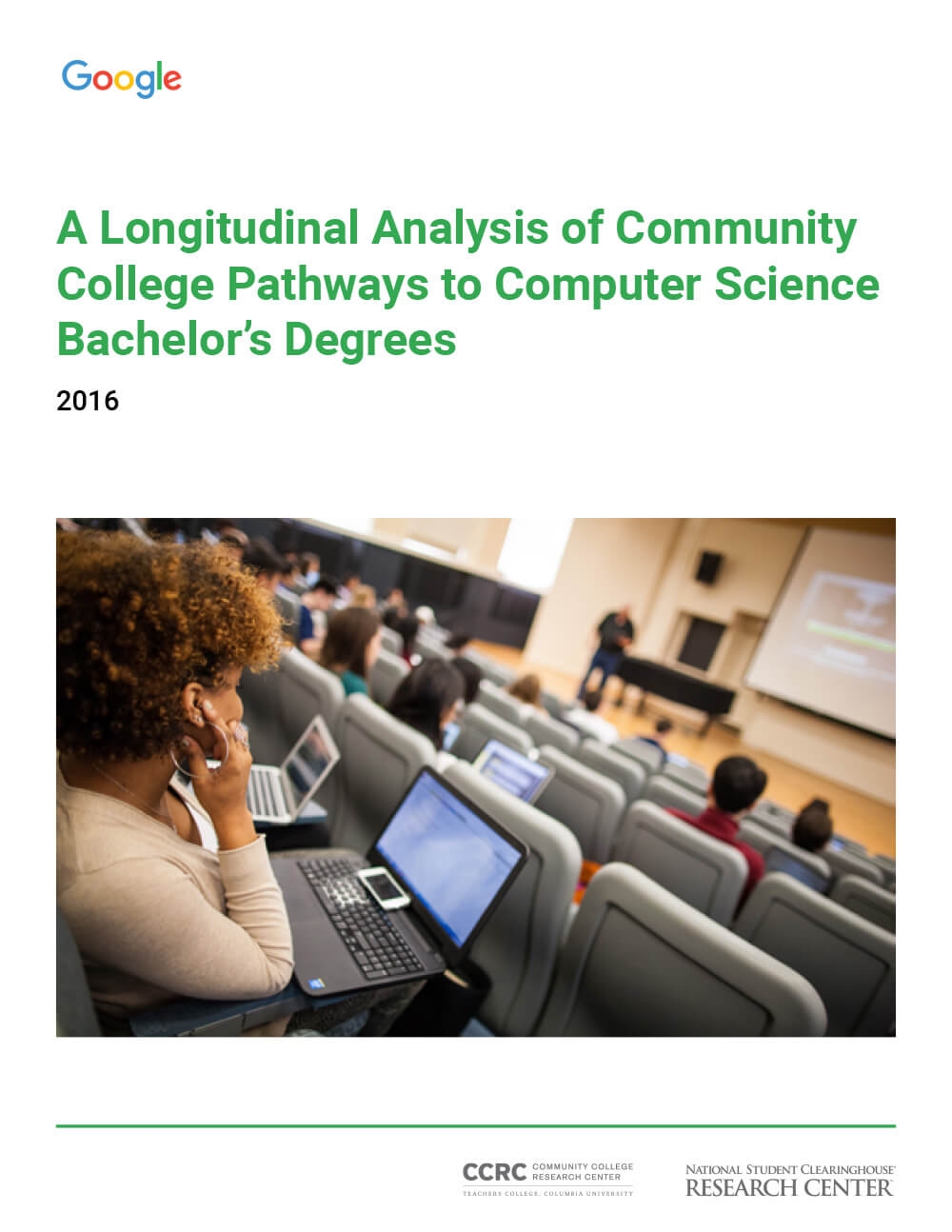
Given the current labor shortage in the field of computer science, it is critical to the continued strength and growth of the U.S. economy for colleges to supply more computer science graduates. Moreover, in order to understand the problems faced by diverse populations and generate creative hardware and software solutions, the populations of computer science graduates themselves need to be more diverse. Although community colleges represent a promising source for computer science bachelor’s-level graduates from groups underrepresented in the field, much work remains to be done in order for that promise to be fulfilled.
As one in a series of Google reports designed to explore the pathways and experiences that community college students—especially those from underrepresented groups—follow to a bachelor’s degree in computer science and the opportunities that exist or that might be created to ensure successful career advancement, this report investigates the national landscape of computer science students at community colleges in order to better understand student behaviors and institutional characteristics that support or hinder community college students’ efforts to attain a computer science bachelor’s degree.
The data suggest that navigating the community college pathway to a computer science bachelor’s degree is complex and challenging. The following findings from the authors’ analyses point to areas where further strides could be made toward supporting the success of community college students in computer science:
- Community college students who eventually attained a computer science bachelor’s degree were unusually focused and fortunate.
- Computer science bachelor’s degree earners were less likely than their peers to earn a community college award.
- Although computer science pre-baccalaureate award earners were more likely to be from underrepresented groups, few went on to earn a bachelor’s degree in computer science.
The report also presents recommendations on how two- and four-year colleges can partner more closely together to create more structured and supported pathways that will help a larger number of underrepresented community college students to attain a computer science bachelor’s degree.
